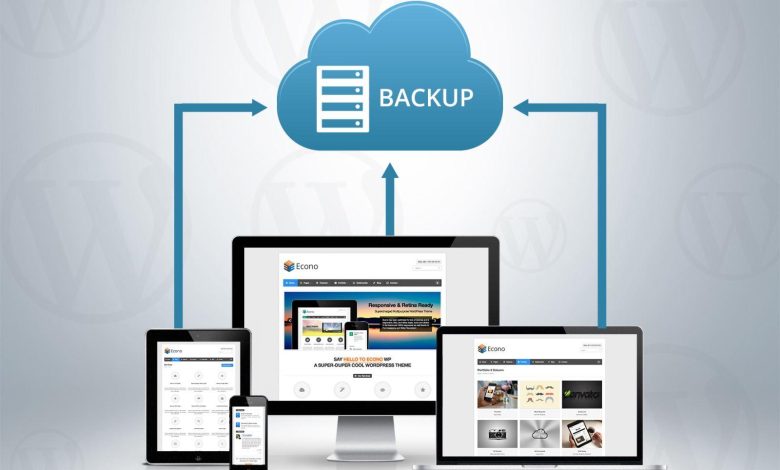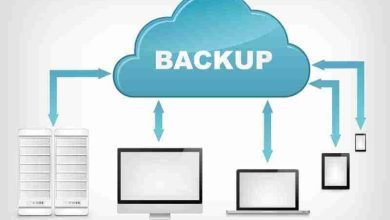Understanding Backup and Disaster Recovery: An Introduction

Outline for “Understanding Backup and Disaster Recovery: An Introduction”
| Section | Subsection |
|—————————————–|———————————————-|
| Introduction | Description of the terms and concepts |
| Importance of Data | Why data matters in today’s digital age |
| Backup Fundamentals | Definition of backup and its purpose |
| Types of Backup | Different methods and strategies |
| Full vs. Incremental Backup | Comprehensive exploration |
| Differential Backup | Understanding differential strategies |
| Continuous Data Protection (CDP) | what is CDP and its advantages |
| Disaster Recovery Defined | Understanding what disaster recovery entails |
| The Need for Disaster Recovery | Why organizations must prioritize recovery |
| Components of Disaster Recovery | Key elements involved in the recovery process |
| recovery Point Objective (RPO) | Defining RPO and its significance |
| Recovery Time Objective (RTO) | Understanding RTO and its importance |
| Business continuity vs.Disaster Recovery | Key differences explained |
| Developing a Backup Strategy | Steps to create a solid backup plan |
| assessing Risks | Identifying potential risks to your data |
| Compliance and Legal Considerations | Understanding regulations and laws |
| Tools and Technologies | Overview of popular backup solutions |
| Cloud Backup vs. On-Premises Backup | Comparison and contrast |
| Cost Analysis | Understanding the costs behind backup |
| Testing Your Backup | importance of regular testing |
| Common Mistakes in Backup Management | Pitfalls to avoid during implementation |
| Future trends in Backup and Recovery | What lies ahead for data management |
| Conclusion | Summary and final thoughts |
Understanding Backup and Disaster Recovery: An Introduction
In a world that thrives on data, ‘Understanding Backup and Disaster Recovery’ cannot be more critical. As configurations of success fluctuate with the increasing reliance on digital information, businesses and individuals must grasp basic concepts regarding data protection. You might say, “Who needs to worry? Isn’t that what IT departments are for?” But here’s the kicker: Ignoring the nuances of data backup and disaster recovery might just double back and haunt you in ways you never expected.
Now, let’s delve into the significance of data in our contemporary digital climate. Data isn’t merely a collection of facts and figures; it’s the lifeblood of decision-making processes and operational efficacy. From personal documents and family photos to crucial enterprise databases containing sensitive information, all data is precious. Our dependency on this digital treasure trove makes it imperative to understand how to safeguard it efficiently.
Having established the importance of data, we need to familiarize ourselves with the foundations of backup technology.At its core,backup refers to the process of creating additional copies of data to prevent loss. It’s not just a technical term confined to IT jargon; it’s a safety net designed to catch you when things go awry. Be it a human error, a hardware failure, or even a natural disaster, the essence of backup is to ensure data is retrievable when misfortune strikes. So fundamentally speaking,if one copy is good,having several is indeed better!
Diverse methods exist for backing up data. Each comes with its benefits and drawbacks, essentially forming a buffet of choices for users. full backups, incremental backups, and differential backups all have their place in a robust data management strategy. You’ve got full backups, the honor roll of data retrieval, were everything is copied wholesale. Then there’s incremental backup, the more frugal cousin, which only copies changes made as the last backup. And let’s not forget differential backups that sit somewhere in between—offering a middle ground by capturing changes made as the last full backup was conducted. Sounds complex? Fear not! each has its strengths, ensuring that you have options tailored to your specific needs.
And of course, who could overlook continuous data protection (CDP)? This fantastic tool captures changes in real-time, making it an invaluable asset in situations where data is critical and requires immediate archiving. Each of these methods serves a distinct purpose, but the key is understanding when to use which strategy and ensuring they work smoothly together.
After laying down the ground on backup methods, we shift focus to disaster recovery and what it really entails.Disaster recovery is more than just having a safety net; it’s a roadmap for bouncing back from catastrophic data failure. In essence, think about it as a plan that ensures you’re not left scrambling after a crisis occurs. Whether it’s a snowstorm that brings systems down or the worrisome incident of a cyber-attack, having a well-defined disaster recovery plan is crucial. Companies—big or small—must prioritize this aspect in their operational strategies, effectively safeguarding their assets against unpredictable disruptions.
Vital components of disaster recovery are integral to forming a solid foundation. Understanding practical elements like the recovery point objective (RPO) and the recovery time objective (RTO) can be a game changer.Put simply, RPO deals with how much data you can afford to lose, while RTO refers to how quickly you need to restore operations. Both considerations should be meticulously tailored based on the unique operations of an organization.
Irrespective of the scale of risks faced,developing a backup strategy is paramount. Identifying potential risks should rarely be an afterthought; it should form the crux of your strategy. Be it human errors, hardware failures, or even business partner failures, knowing what you might face allows for the development of comprehensive backup solutions.
Of course,one cannot stress enough the importance of compliance and legal considerations. Many industries are governed by stringent regulations regarding data management. Understanding these legal ramifications and ensuring compliance is not merely a best practice; it’s a necessity to avoid hefty fines and penalties.
In today’s tech-savvy world, we have an arsenal of tools and technologies at our fingertips. From traditional external hard drives to saas (Software as a Service) solutions and emerging cloud technologies, myriad options abound. However, choosing between cloud backup and on-premises backup can oftentimes feel like standing at a crossroads with no clear road sign in sight. Which road should you take? Both methods come with unique advantages—cloud offerings are typically more cost-effective and accessible, while on-premises solutions can provide local control.
cost analysis also plays a crucial role in the decision-making process. As they say, “You have to spend money to make money.” In the data world, balancing the cost of backup solutions against the potential cost of data loss is part of a delicate dance that companies must navigate.
Testing your backup processes regularly is yet another layer that shouldn’t be overlooked. It is easy to think that backing up is a one-and-done deal. but, in reality, regularly testing your backup systems will ensure your data can be restored swiftly and smoothly in the event of a disaster.
Let’s not forget about common mistakes in backup management. A million-dollar question to consider: Are you including all critical files in your backups? Underestimation is frequently enough the pitfall key players fall into, raking havoc when data loss eventually strikes.
Looking ahead, predicting future trends in backup and recovery is essential to align with advancements. Innovations such as artificial intelligence and machine learning are paving the way for smarter, automated backup solutions. By embracing these trends, businesses can considerably enhance their data management frameworks.
the journey of understanding backup and disaster recovery serves as a merciful reminder of the importance of proactively safeguarding what matters most—our data. A well-rounded approach to backup not only protects assets but also plants the seeds for a thriving digital ecosystem, capable of weathering storms. Understanding its intricacies will lead businesses to be well-prepared for whatever may come their way. After all, knowledge is power, and in the realm of data, there’s no such thing as being too prepared.




